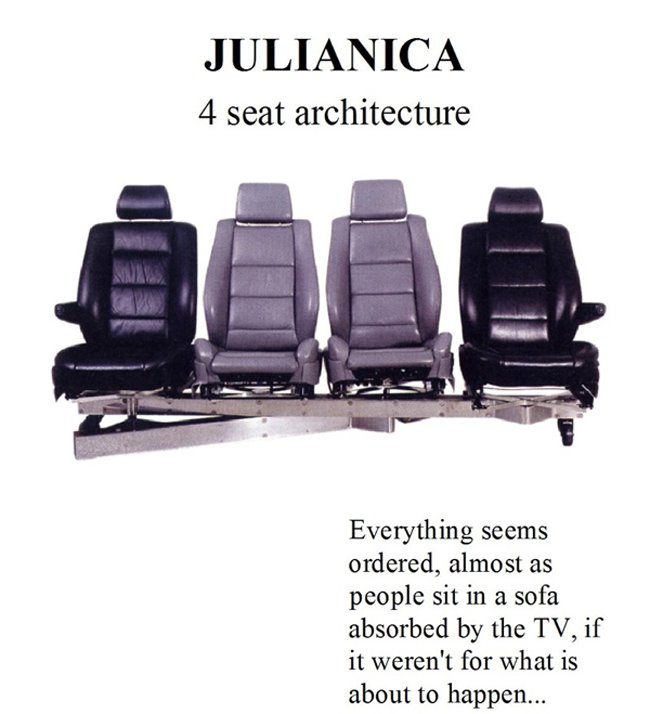Society is characterised by pluralism of expressions. As a way of acknowledging the complexity inherent in society, many architects and designers propose architecture which relates to the individual client and places things in context to each other. That is to say, architecture which establishes a dialogue of different textures.
From this point of view, architects design interior spaces and furniture responding to new technology, materials, space economy and changing ideas of comfort. In recent years, the investigation has included placing elements related to work and office inside the domestic landscape, an addition to the vocabulary that had already introduced industrial elements such as sewing machines and computers into the home and hence considered part of the domestic furniture. Nevertheless, from the innumerable types of single chairs and sofas, dining and coffee tables, their primary difference lies in the form of styling rather than in the concept behind them. Ettore Sottsass has pointed out, in his prologue for the Spanish magazine, Experimenta n. 20 dedicated to Spanish furniture design 1902 - 1998, that 80% of the design that we see in magazines are chairs and sofas.1 The sofas are all similar and always two set against each other and in the middle, there is the inevitable coffee-table. Thus the setting is predetermined and as if assumed.
As a response to Ettore Sottsass's appeal to young designers, this article introduces Julianica, a four seat architecture by Javier Sanchez Merina, a piece of furniture which encourages a multiplicity of communication, flexibility of use and mobility and, in itself, reflects the pluralism in society which it brings to the interior of the home. Julianica is a structure where communication becomes a dominant practical purpose. Communication between different materials and textures that enriches people's contacts and positions against each other. Its structure operates like scissors which allows the sitters to change their positions as the dialogue develops, moods change and the day turns darker. This ability to adjust to different situations is reinforced by the fact that the seats can be manipulated as desired, being car seats they are physiologically considered. New relationships are established, recycling refined materials and high technology act as a playful irony against the overt consumer society. Used leather car seats from a scrap yard, hard steal from old machinery, and dense wood from derelict train sleepers, are the main components of design.
With Julianica, individual elements and people are intertwined into a unity which, if broken, can be reconnected as if they had only changed their position for a moment. There is no one way of interpreting reality, one solution to a problem, one way of arranging one's home. Julianica is a furniture which believes in alternatives. From this moment, architecture, from the spoon to the city, follows the same principles. The society has developed in such a way that the concept of flexibility and mobility becomes a reaction to the idea of designing furniture fixed to the interior of a house and not thought of in a wider context that could incorporate the same furniture in another type of dwelling.
Julianica was born from the fusion of building and furniture design, avoiding any previous scheme and started by questioning the way architecture was understood. Julianica does not either fall into the definition of furniture design as a mere functional item or as a product predetermined by its design. The sofa, a four seat architecture, is prepared to intervene, the one who uses it makes it different - particular and own as desired.
1. Sottsass, E. 'Prólogo' in Experimenta 20. Diseño del mueble en España 1902 - 1998. Revista para la cultura del proyecto. Madrid. p. 3- 4.



FOTOGRAFÍA: PABLO ALMANSA

































